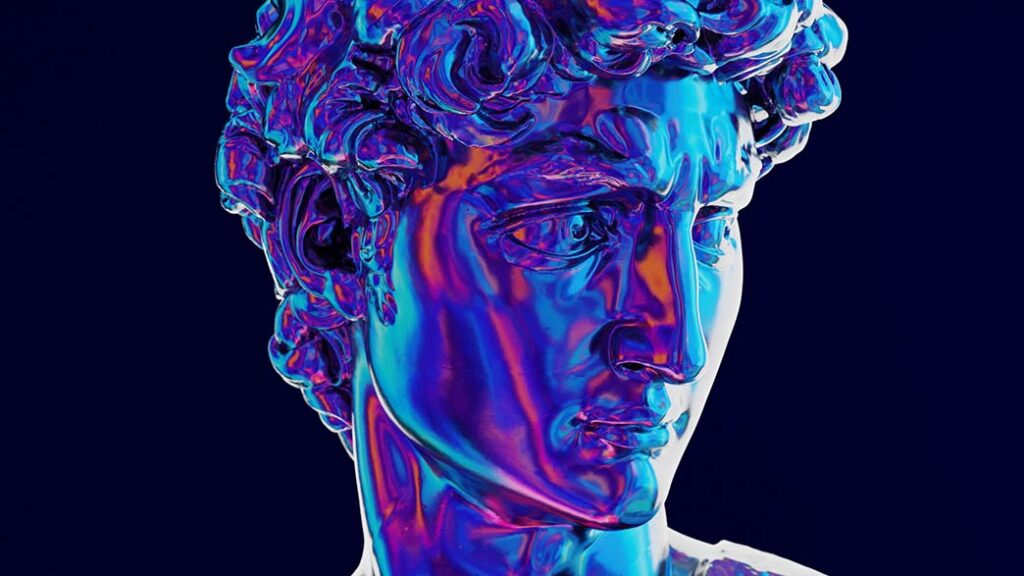The Introduction of Advanced Workmanship: From Customary Procedures to Present day Instruments
Computerized craftsmanship addresses an unrest in the realm of visual imagination, mixing customary creative procedures with state of the art innovation. Its beginnings, advancement, and present status are formed by the crossing point of imaginative articulation and computerized development.
1. Early Starting points: Conventional Craftsmanship Strategies Meet Innovation
The seeds of advanced craftsmanship were established well before the broad utilization of PCs in the innovative flow. Early trials started during the 1950s and 1960s when specialists and researchers originally investigated the capability of PCs for making workmanship.
1950s-60s: Early Trials
The earliest types of advanced craftsmanship arose when PC researchers started programming machines to create visual examples. Prominent trailblazers incorporate Ben Laposky, who utilized an oscilloscope to make visual examples, and Harold Cohen, who created AARON, one of the principal simulated intelligence programs intended to draw independently.
1970s-80s: The Approach of PC Designs As figuring power developed, so did its capacity to deal with additional complex creative undertakings. During the 1970s, programs like Sketchpad were created, permitting clients to make vector drawings on PCs. This prepared for the utilization of PCs in advanced delineation and visual depiction.
The 1980s saw the send off of personal computers and projects like Adobe Artist and Photoshop, which changed computerized workmanship. Specialists could now control pictures with accuracy and opportunity that was beforehand inconceivable with conventional media.
2. The Ascent of Advanced Devices: From Pixels to Brushes
With the advancement of programming, specialists started to get away from customary paintbrushes and pencils toward computerized devices that considered more complicated and adaptable creation.
Programming Improvement
Adobe’s Photoshop, presented in 1988, denoted an achievement in computerized workmanship. At first a device for photographic artists, it in the end turned into the essential mechanism for computerized painting, representation, and photograph control. Also, CorelDRAW became famous for vector designs, and Painter brought the customary feel of brushes and surfaces to the advanced material.
Tablet Innovation
During the 1990s, the send off of realistic tablets, especially Wacom’s, permitted specialists to draw straightforwardly onto the screen with pointer like pens. This was a distinct advantage regarding computerized imaginativeness, as it considered more liquid, normal drawing and painting.
3D Advanced Craftsmanship
Close by 2D outline, 3D demonstrating started getting momentum. Early models incorporate programming like AutoCAD for design, and 3D projects, for example, Blender and Maya, which are currently utilized broadly in liveliness and gaming.
3. Advanced Workmanship and the Web: The Democratization of Craftsmanship
The ascent of the web assumed a critical part in the development of computerized craftsmanship, as it permitted specialists to impart their work to a worldwide crowd.
Online People group and Stages
Sites like DeviantArt, sent off in 2000, became virtual displays where computerized specialists could grandstand their work and associate with other creatives. The availability of the web additionally empowered the ascent of fan workmanship, online commissions, and coordinated efforts.
Computerized Craftsmanship as an Industry
The interest for computerized craftsmen flooded in businesses like promoting, computer game plan, film, and distributing. Computerized craftsmanship opened additional opportunities for activity, embellishments, and visual narrating. Notorious models incorporate Pixar’s CGI liveliness and computer game plan, where advanced craftsmanship is vital to establishing vivid conditions and characters.
4. The Time of NFTs and Virtual Craftsmanship
The ascent of NFTs (Non-Fungible Tokens) in 2021 carried advanced craftsmanship to the front of the workmanship market, igniting worldwide discussions about proprietorship, worth, and creativity in the computerized domain.
NFTs and the Blockchain
NFTs permit craftsmen to mint their advanced functions as novel, tradable resources on the blockchain. This development set out new open doors for computerized craftsmen to sell their work straightforwardly to authorities and lay out advanced possession in manners that were not already imaginable.
Virtual and Expanded Reality
As innovation progressed, craftsmen started exploring different avenues regarding computer generated reality (VR) and expanded reality (AR) as new vehicles for imaginative articulation. Programs like Slant Brush (gained by Google) permitted craftsmen to make 3D craftsmanship in virtual spaces, further obscuring the lines among conventional and advanced mediums.
5. Latest things and the Fate of Advanced Craftsmanship
Today, advanced craftsmanship keeps on developing, with new apparatuses, stages, and innovations forming the bearing of inventive articulation.
Artificial intelligence in Craftsmanship
Man-made brainpower has entered the innovative scene, with programs like DALL·E, Midjourney, and Runway assisting specialists with creating craftsmanship through artificial intelligence produced prompts. This has ignited conversations about origin and the connection between human imagination and AI.
Intuitive and Vivid Craftsmanship
Specialists are progressively involving intelligent components in their works, for example, computerized establishments or workmanship that answers the watcher’s developments or information. The utilization of AR and VR in displays considers more vivid encounters, taking craftsmanship past the material.
Online Entertainment and Virtual Displays
Stages like Instagram, TikTok, and computerized displays offer advanced craftsmen remarkable perceivability, making it simpler to share their manifestations and draw in with a worldwide crowd. Virtual craftsmanship shows are likewise turning out to be more normal, where computerized specialists display their work in a totally virtual climate.
Decision: Computerized Craftsmanship as Another Wilderness
Computerized craftsmanship has progressed significantly from its unassuming starting points as a mix of early PC tests and conventional strategies. Today, it remains as a strong type of articulation, offering boundless opportunities for craftsmen to try, develop, and draw in with crowds in new ways. As innovation keeps on advancing, computerized workmanship will without a doubt stay at the very front of imaginative trial and error, molding the eventual fate of inventive articulation for a long time into the future.



